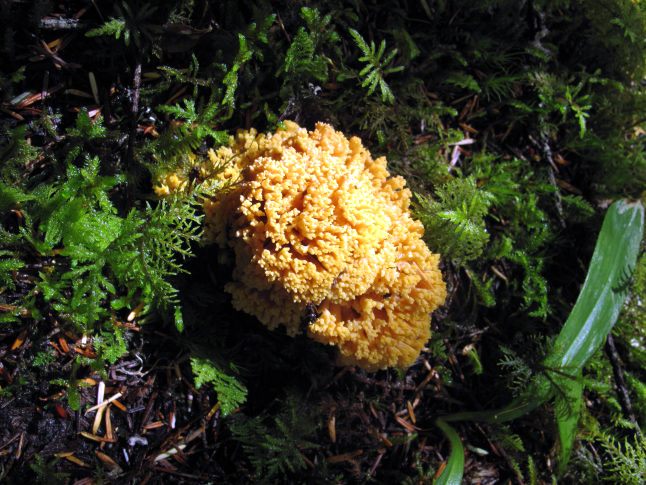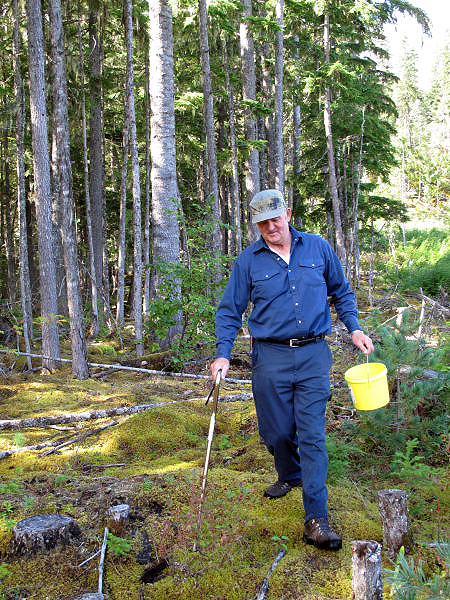
By Laura Stovel
One of my favorite things about Revelstoke is the way we can observe, almost on a daily basis, the steady progress of the seasons. And, for me, the

crest of autumn is the best time of all: the first dustings of snow on the mountains; a new crispness in the air after summer’s heat; mountain ash trees laden with orange-red berries, and the red fish spawning in the creeks. The world seems full of colour, energy and the promise of harvest.
One gift of the season which has always eluded me has been the pleasure of foraging for mushrooms.
While, every autumn, friends would return from the forest with buckets of chanterelles, I could only look on with admiration as I lacked confidence in my ability to distinguish between edible and poisonous mushrooms. This year I wanted to do something about that. If I could learn to identify one edible mushroom I would be satisfied. So when John Markstrom announced that “the chanterelles are back,” after the rain, I seized my chance and asked if he would take me on a foraging trip in the forest.

The next morning John drove me to a spot on Mount Begbie where the old growth forest meets a logged area. “Most of the old places are all logged off,” John said. “You’ve got to have old trees to find the mushrooms. Hemlock and fir are good and sometimes birch. The mushrooms are under the trees, in the moss.”
We stepped off the road and onto a thick carpet of moss under a canopy of trees, many of them dripping with lichen. There was little underbrush, save a few naturally-fallen, decomposing logs and scatterings of blueberry and huckleberry bushes. The blueberries, to my surprise, still bore fruit; the huckleberry bushes were past that and were now turning a gorgeous burgundy. The single, navy berries of queen’s cups perched perkily on straight, dainty stems and clusters of red berries nestled just above the moss.
It took a bit of looking – chanterelles are not yet plentiful – but John finally spotted a cream-coloured, potato-sized mushroom in the moss. He crouched and gently pried two mushrooms from the spot, carefully replacing the moss, and placed them in his bucket.
Chanterelles have uneven tops and protruding gills underneath. We saw many kinds of mushrooms and fungi: some with neat, round tops; some with dips in the middle; most were poisonous. I even found an edible coral fungus that looks just like its namesake – good in salads or soups, John said. In the end we emerged with a small harvest of chanterelles and memory of a deeply satisfying morning of foraging. What a privilege it is to walk in the forest with a woodsman whose knowledge of the forest makes the details of the season come alive.



